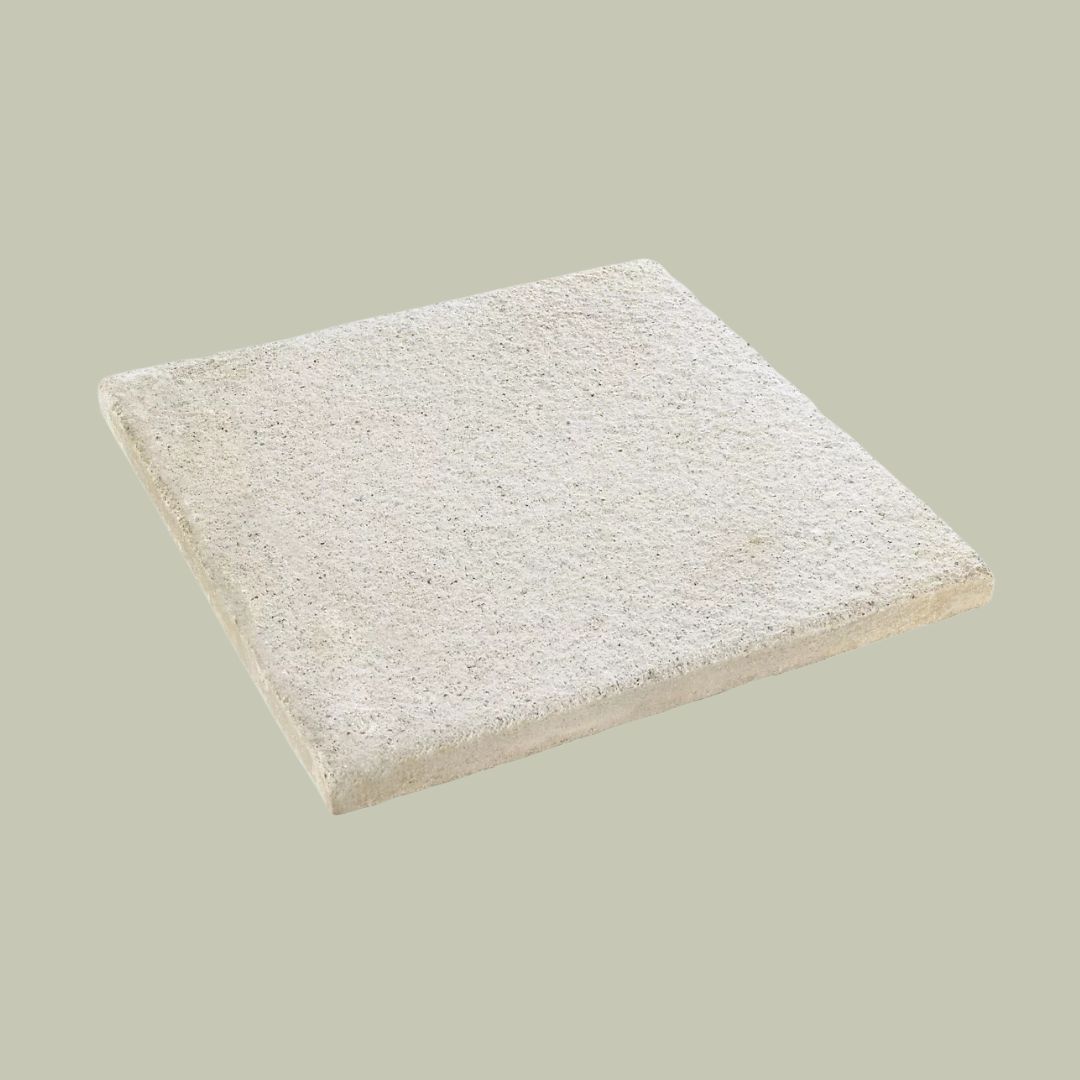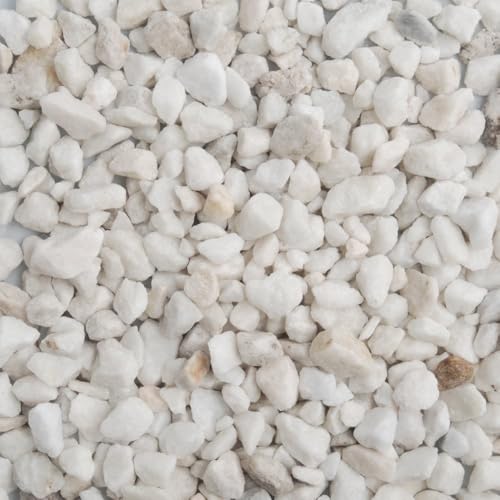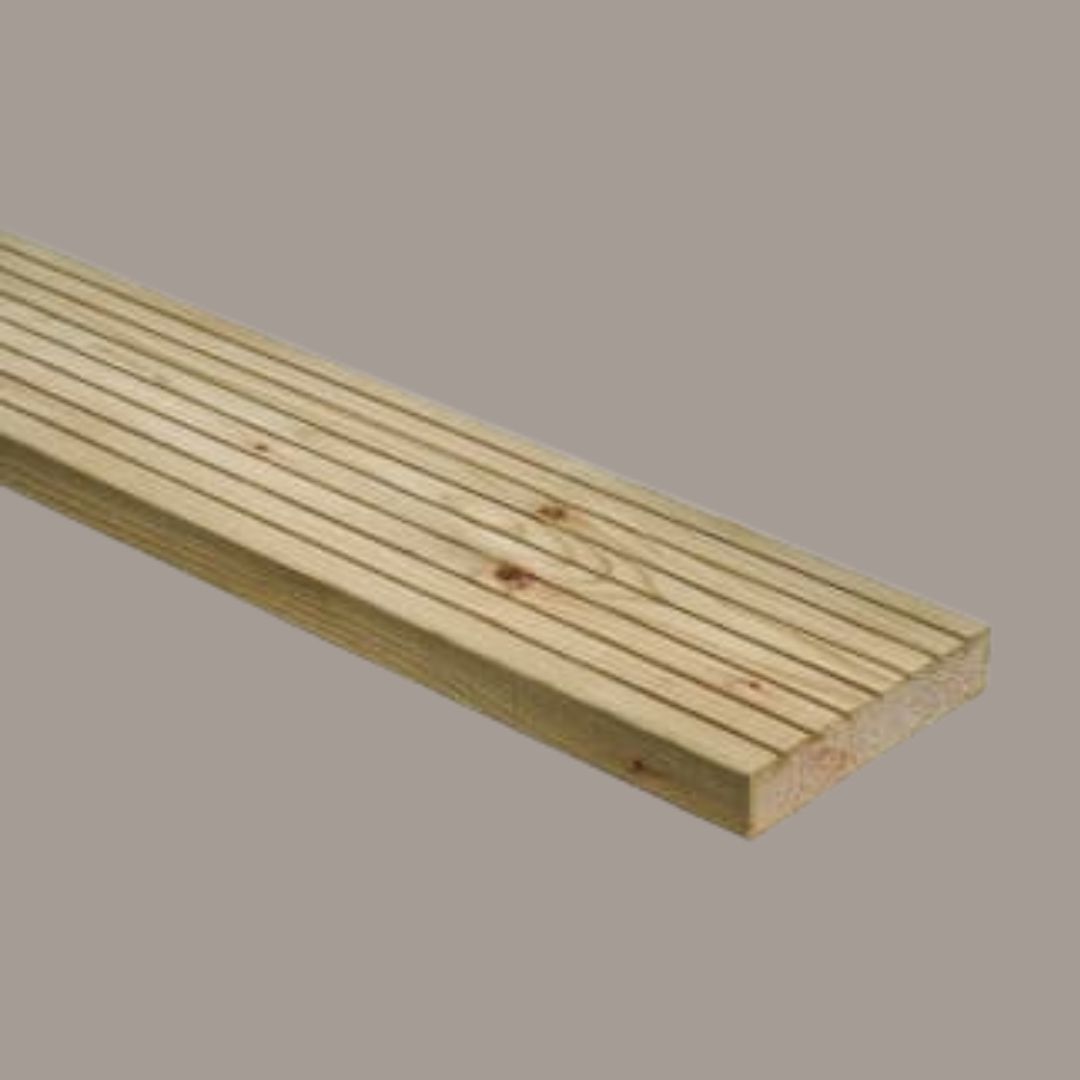Slippery Garden Path? These Material Switches and Design Tricks Will Stop Your Outside Space From Feeling Perilous Come Winter
Landscapers explain how to create a safe and stylish pathway to minimize the risk of accidents and maximize the appearance of your yard
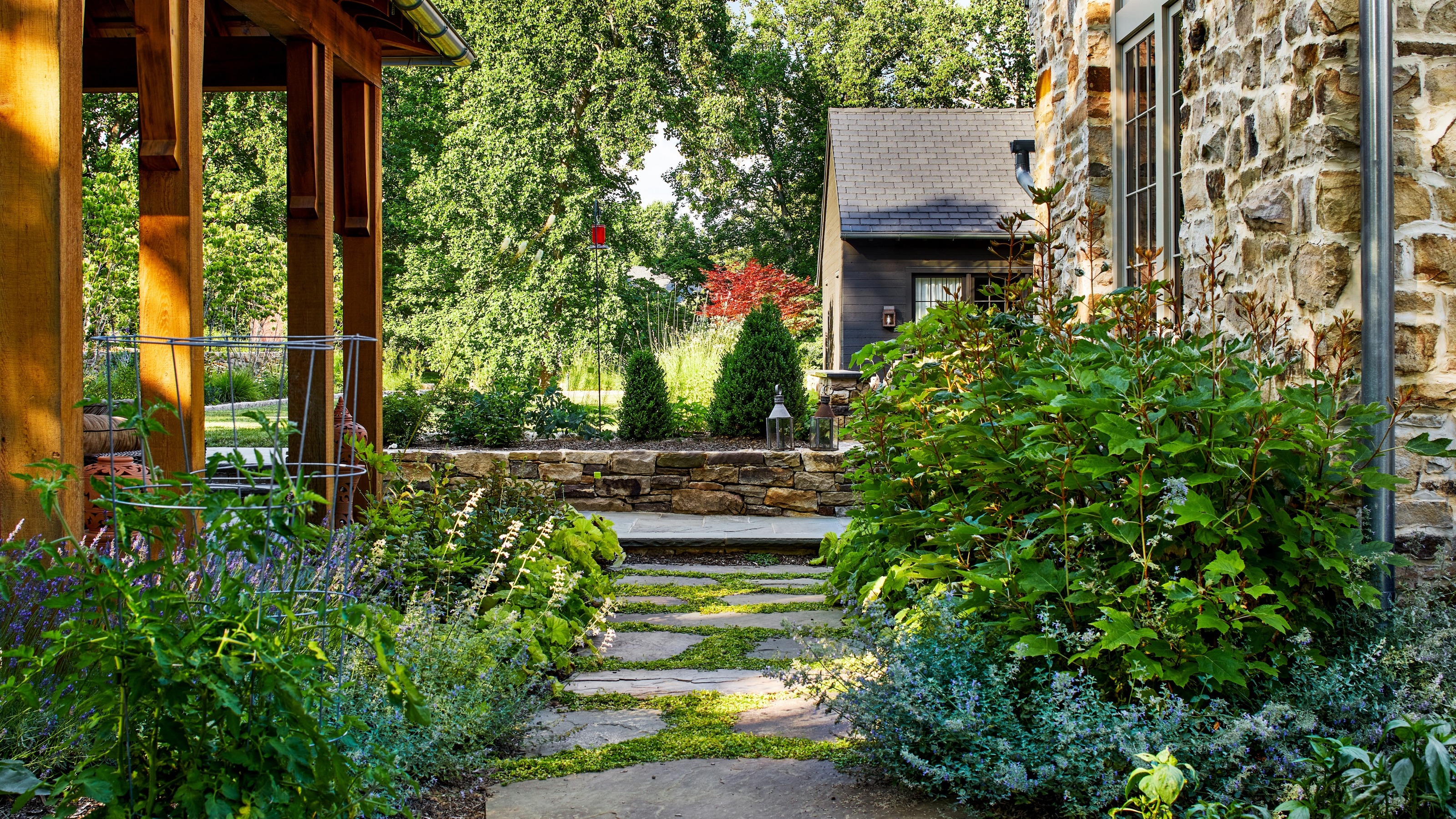
A garden path may seem like a small part of an overall landscape design or outdoor scheme. However, it requires as much careful consideration as the other aspects for it to serve its purpose and suit your space.
When choosing the hardscaping materials and the design of your path, safety has to be as much of a priority as style. Rain, ice, snow, and frost can turn an outside surface into a skating rink.
Of course, applying salt and grit can temporarily help reduce slipperiness, but there are other longer-term switches and tricks that landscape designers recommend to prevent your garden path and other paved areas from becoming perilous in winter.
Discover what experts suggest and how to create a path that's as safe as possible, and attractive to boot.
1. Choose Textured Materials
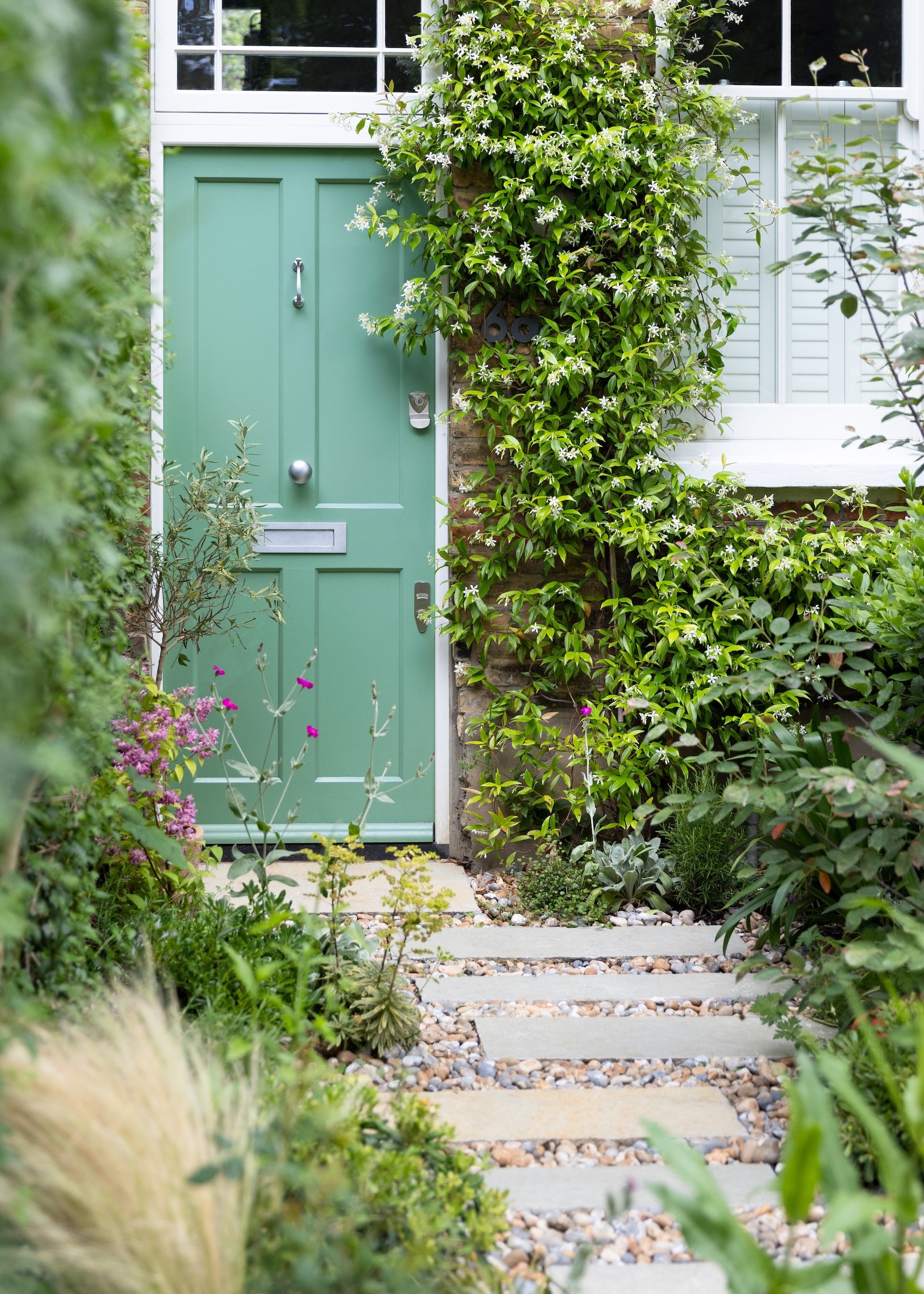
Staggered slabs set between pebbles provide an attractive path with texture, drainage, and style.
We get it, with so many beautiful tile trends on offer, it's tempting only to consider the look and cost of a garden path. But the practical aspects must be on your priority list too.
Textured materials offer more surface grip than smooth surfaces, so before settling on a design, consider how the material will perform practically, especially in winter weather.
"Choose materials with natural texture and a good grip when wet, like rough-cut stone, textured concrete pavers, or gravel," says Adam Sexton, landscape designer and senior associate, Richardson & Associates. "Avoid smooth surfaces, as these are more prone to becoming slippery."
The Livingetc newsletters are your inside source for what’s shaping interiors now - and what’s next. Discover trend forecasts, smart style ideas, and curated shopping inspiration that brings design to life. Subscribe today and stay ahead of the curve.
"In the UK’s damp climate, where rain, frost, and algae are regular visitors, surface texture is your best defense against a slippery path," says Gina Taylor, founder of East London Garden Design. "Swap smooth stone for finishes that hold grip in wet and cold conditions: look for riven or sawn-and-textured sandstone, flamed or shot-blasted granite, or lightly bush-hammered limestone.
"Outdoor-rated porcelain with a minimum R11 (ideally R12) slip rating performs brilliantly too, offering both style and durability. Resin-bound gravel is another excellent choice — its porous structure allows water to drain away quickly, reducing surface film and moss build-up," adds Gina.

Adam is a landscape designer, creative thinker, and garden enthusiast. He joined Richardson&Associates in 2020 and is passionate about residential landscapes and ecological restoration. Adam earned his bachelor’s degree in Landscape Architecture from Virginia Tech in 2010 and has over a decade of design detailing and construction implementation for projects that range from public parks, campuses, international urban planning, and estate master planning.

Gina Taylor is the founder and lead designer of East London Garden Design, a studio specialising in contemporary urban gardens, courtyards, and rooftops. Based in East London, Gina is passionate about creating outdoor spaces that feel like a true extension of the home — places that are welcoming, personal, and connected to their surroundings.
2. Apply Surface Texture Treatments
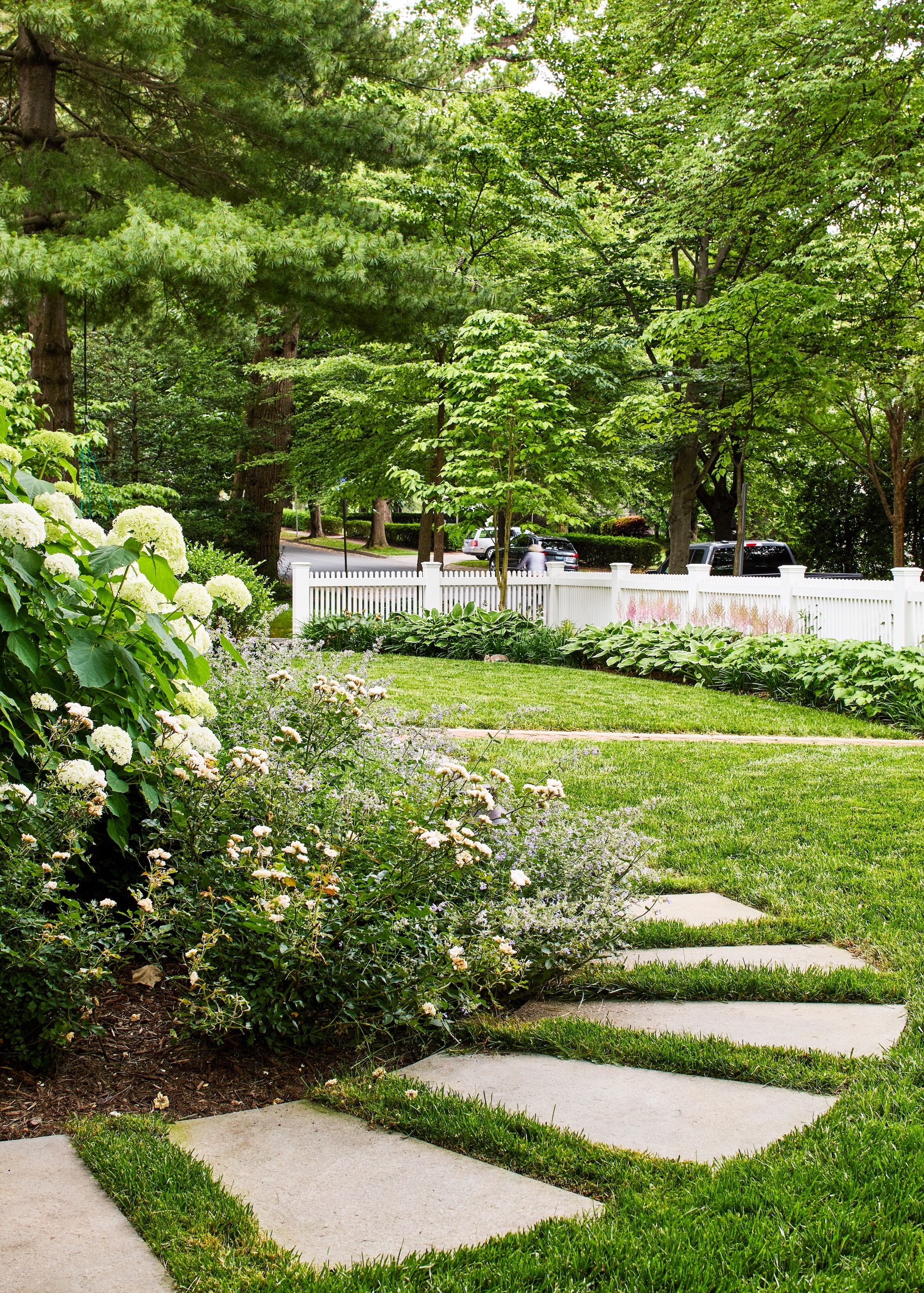
Textured surfaces can be applied retrospectively if you already have a path that you love.
Of course, it is entirely possible that you have inherited an existing garden path and would like to keep it, or don't have the budget to replace it. Alternatively, you may have seen slabs or stones that you would like for a new path, but the finish is smooth. In this case, experts recommend having a textured finish applied.
"It's a good idea to use textured finishes, or sandblasting, or aggregate mixes for better traction," says Adam. "Anti-slip coatings can also be applied to existing paths, if required."
If you’re keeping existing paving, Gina says, "a clear anti-slip sealer with a fine grit additive can introduce subtle texture and extra traction without altering the appearance."
Looking for a good anti-slip sealer? This Sika Patio Seal from Amazon, priced at just £17.54, should do the trick.
3. Design in Drainage
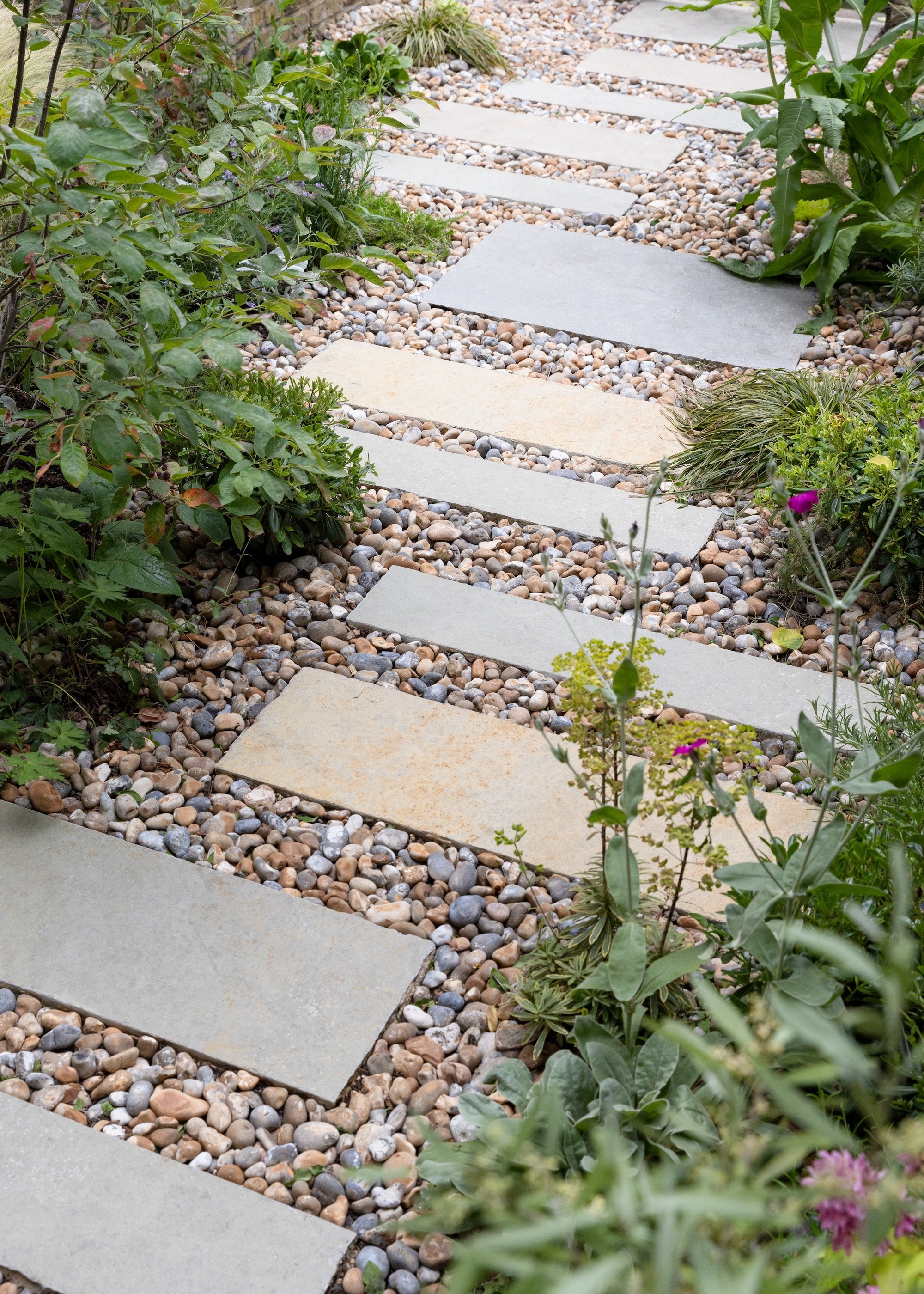
Using a permeable surface such as pebbles or gravel between slabs is a stylish and subtle way to incorporate drainage.
Drainage may not be uppermost in your mind when planning your modern garden path. However, just as inadequate drainage can be a hard landscaping mistake that is trapping rainwater in your garden, it can also be a slip hazard on a path. The dangerous combination of pooling rainwater and fallen leaves is something that can be reduced with subtle drainage techniques, such as permeable surfaces like pebbles or gravel between slabs.
"Slips often start with standing water," explains Gina. "Build in a 1:60–1:80 crossfall on paths and patios, add discreet channel slot-drains at door thresholds and path bottoms, and use permeable bases where possible (e.g., for resin-bound or setts). Break long slopes with small level landings; if a path must be steep (over 1:20), add a simple handrail and a grippy surface so it’s forgiving in frost."
4. Rethink Timber and Decking Details
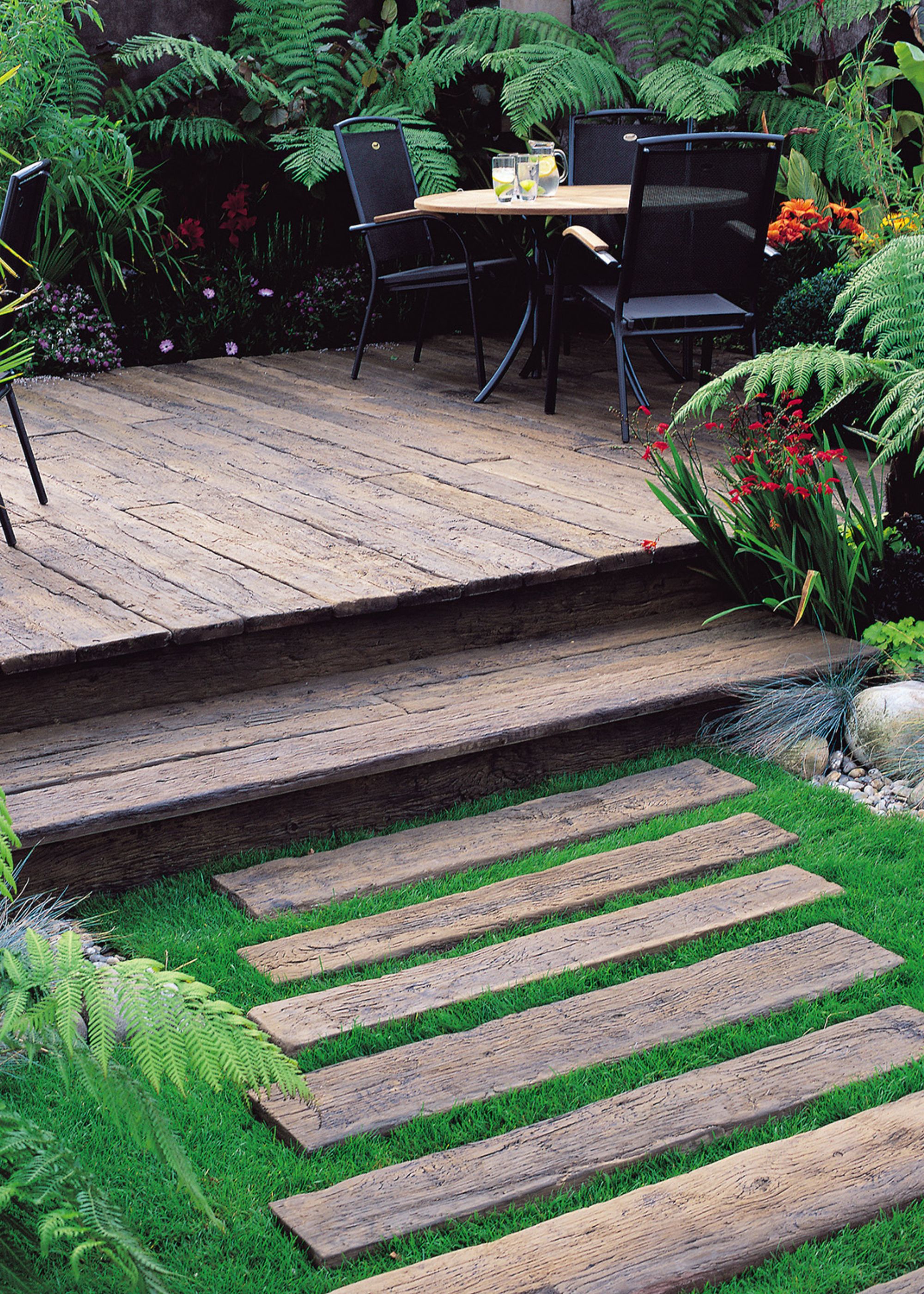
Leaving gaps between wooden boards for drainage prevents rainwater from pooling.
While many front yard paths are often made of tile, slabs, or stone, some backyard paths are timber, especially those leading off from decking. Cleaning a timber path and clearing it of any algae build-up is part of any fall preparation, but there are other steps you can take, too.
"Traditional softwood decking is notoriously slippery in winter," says Gina. "If you're replacing it, go for high-grip composite boards with deep emboss and a matte finish. If you're keeping timber, you could retrofit GRP anti-slip strips (screw-on), or roll on a resin grit coating to the main walking line.
"Laying boards perpendicular to the direction of travel, keeping 5–6 mm gaps for drainage, and specifying a subtle cross-fall, so water runs off the surface rather than sits, will also help to prevent a wooden path from becoming slippery."
5. Create Contrast With Edging
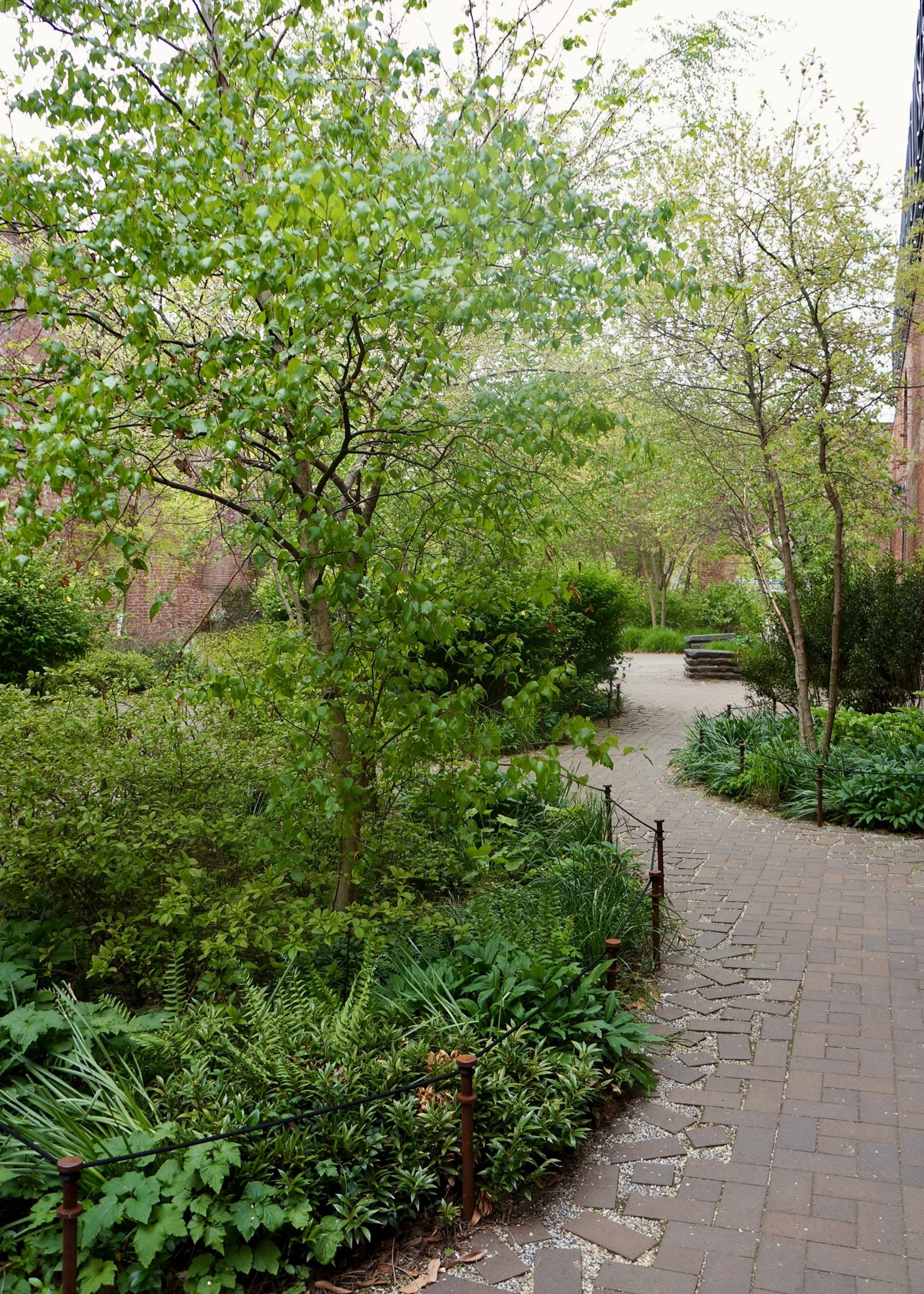
Edging a path with gravel and changing the laying pattern is a clever way to influence the direction of travel when visibility is lower at night.
The surface texture of the path is obviously important when it comes to preventing slipperiness. But so is being able to both see and sense the path beneath your feet, especially if it is a winding path, rather than a straight one. This can be achieved with material choices and subtle design features in your garden.
"Good visibility is a safety feature," says Gina. "To enhance this, edge paths with contrasting pavers or a metal strip, add a nosing contrast to steps, and keep joints consistent so the eye can 'read' the route."
6. Ensure Adequate Illumination
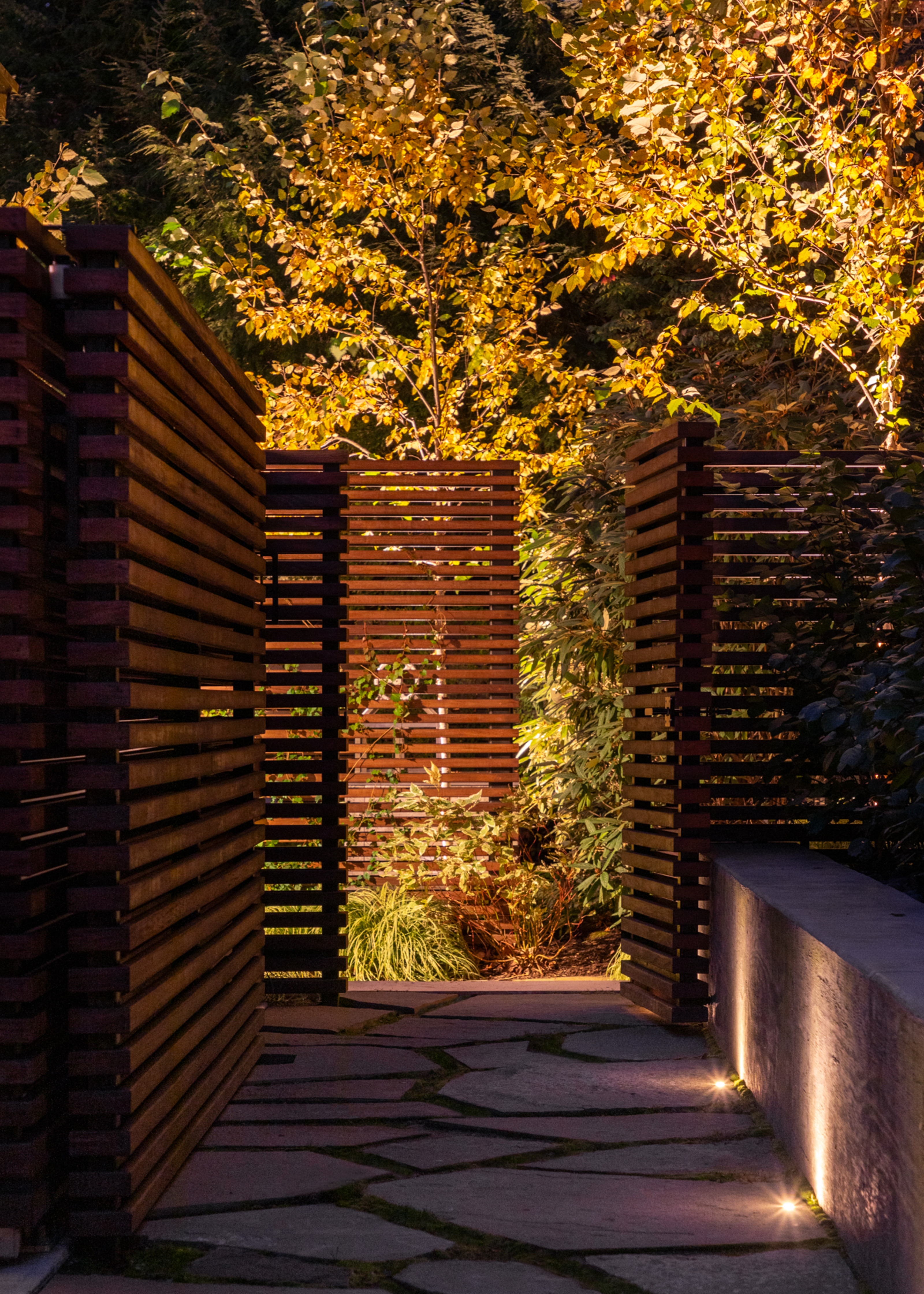
Ground level sensor lights can illuminate a path when required.
Well-placed porch and patio lighting is another way to prevent a garden path from feeling perilous come winter. Being able to see puddles or icy patches on garden paths can help you and others avoid them, especially when it's dark. So ensure your walkways are sufficiently illuminated before the nights draw in.
"While not a material or direct design element in itself, proper lighting is essential for safety on a garden path, especially in wet or icy conditions," says Adam. "Strategically placed path lights can illuminate the surface, highlighting any slippery areas or changes in elevation that might otherwise be missed. This is particularly important for paths used after dark."
"Low-glare, warm-white (around 3000K) lighting — bollards, recessed step lights, or under-rail LEDs on sensors—helps you spot wet leaves and black ice without dazzling the space," advises Gina.
FAQs
Why Is it Important to Tend to Your Landscape Before Winter?
Tending to your landscape before winter is essential maintenance. Just as you would ensure the gutters on your property are clean and that anything leaking is fixed, before winter weather arrives, it is important to sweep leaves and grime off of paths and patios, and to clear algae from decking or wooden walkways to prevent slippery surfaces, as this reduces the chance of accidents or damage.
As outlined above, adding drainage, texture, or edging to an existing path can also make it safer. Ensuring that outdoor lighting is working and any blown bulbs have been replaced will also enhance safety and security.
Garden maintenance is so easily overlooked when life is busy, but taking a few hours to tend to your landscape before winter sets in is well worth it. Preparation always saves time in the long run. Cleaning and maintenance help to ensure materials last longer, and along with the design tricks recommended by our experts, can prevent accidents. (Trust me, fracture clinics are packed in the autumn and are no fun.) Taking steps to make your walkways safer is something that you won't regret.
Jacky Parker is a freelance lifestyle journalist and writer, producing a wide range of features for magazines and digital platforms. She has written for Livingetc and its sister titles, Homes & Gardens and Country Homes & Interiors for more than 15 years, both as a freelance contributor and as Acting Digital Editor and Acting Style Content Editor, regularly reporting on the latest interiors, gardens and wellness inspiration, speaking to experts in their respective fields, and discovering the best tips.
Jacky has also written for other publications, including Sunday Times Style, The Telegraph, Architectural Digest, House Beautiful, ELLE Decoration, Red, Grand Designs and more.
